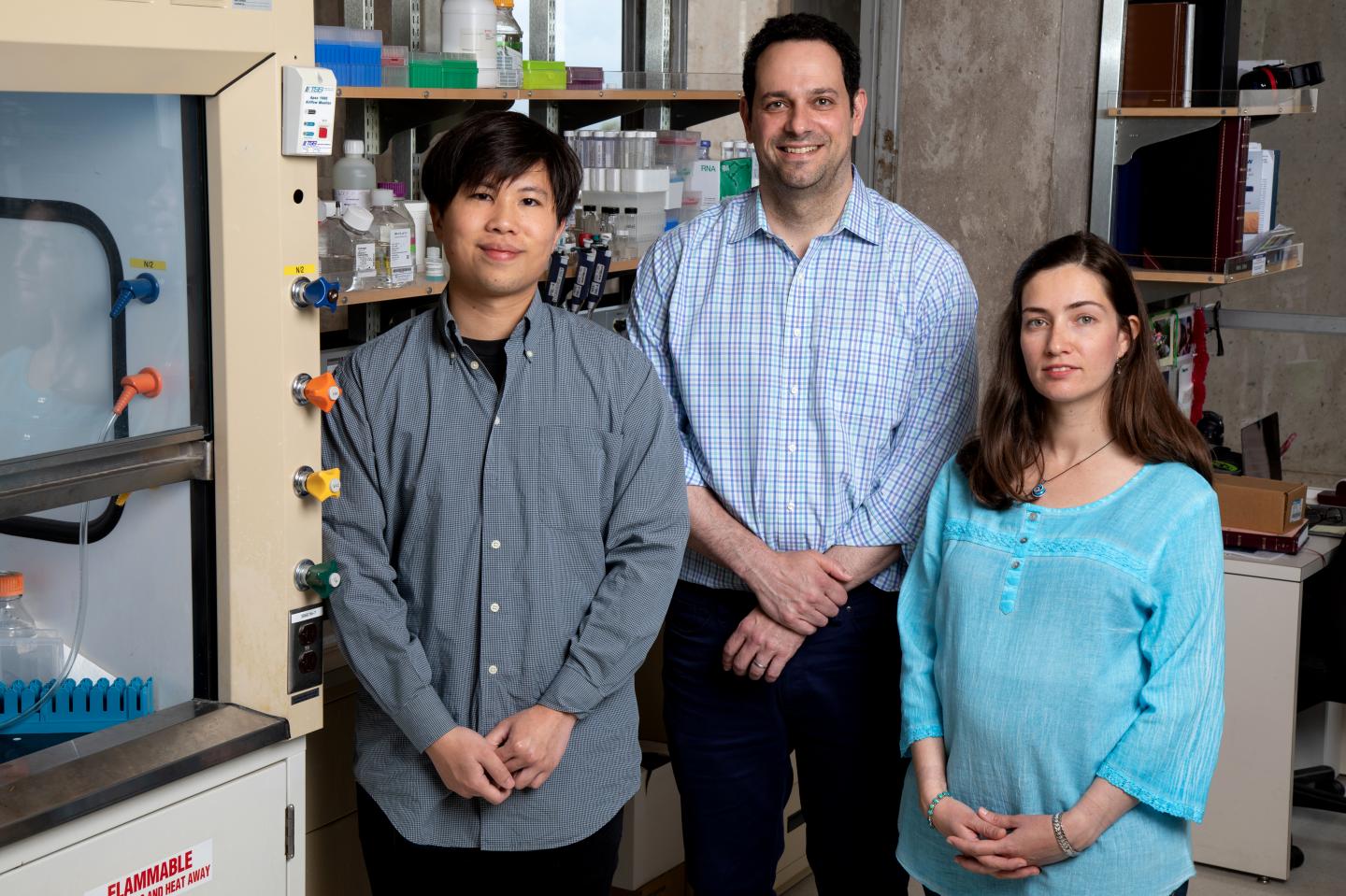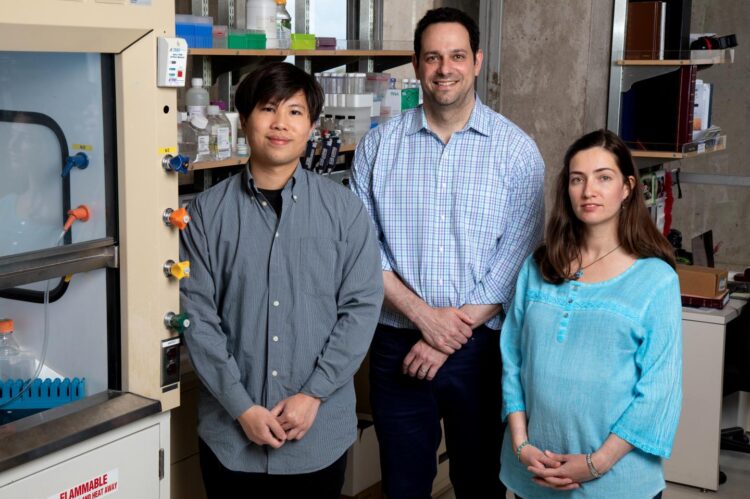Salk researchers discover way to increase levels of fats that fight inflammation and diabetes, in mice

Credit: Salk Institute
LA JOLLA–(May 1, 2020) Salk and Scripps Research Institute scientists, along with collaborators at the pharmaceutical company Lundbeck, identified two genes that can regulate levels of healthy fats, called FAHFAs, in mice. The team found that the loss of the two genes led to higher-than-normal levels of the beneficial FAHFAs, while blocking the genes’ activity with an experimental drug also increased FAHFA levels.
Because FAHFAs decrease inflammation and increase insulin sensitivity, a better understanding of the activity of their regulatory genes may eventually lead to therapies for people with diabetes and inflammation.
“This study is a really great starting point to answer important questions about FAHFAs,” says Alan Saghatelian, a professor in Salk’s Clayton Foundation Laboratories for Peptide Biology and corresponding author of the new paper, which appeared in the Journal of Biological Chemistry on May 1, 2020. “Targeting them in this way might have important implications for treating metabolic and inflammatory diseases.”
In 2014, Saghatelian and collaborators discovered FAHFAs (short for fatty acid esters of hydroxy fatty acids) when studying a strain of obese mice that were unexpectedly resistant to diabetes. The mice, they found, had sixteen times more FAHFAs than usual. The researchers went on to show that people with pre-diabetes have lower-than-average levels of FAHFAs in their fat and blood. Together, the results suggested that higher levels of FAHFAs may be beneficial to health. Further studies also found a connection between FAHFAs and reduced inflammation in the body.
While many types of fat are ingested through food, FAHFAs are naturally produced by the body, so altering their levels is more difficult. But in 2016, Saghatelian’s group, with Benjamin Cravatt of The Scripps Research Institute, reported that two proteins, AIG1 and ADTRP, seemed to alter levels of FAHFAs in isolated cells.
In the new work, Saghatelian and Cravatt’s labs, along with the Saez lab at Scripps and industrial partners at Lundbeck, collaborated to further study how AIG1 and ADTRP regulate FAHFAs in living animals. The researchers found that when mice lacked both AIG1 and ADTRP, levels of FAHFAs in their fat tissues were up to nine times higher than levels seen in normal mice. Experiments confirmed that FAHFAs were increasing because AIG1 and ADTRP weren’t there to break down the beneficial fats, as they usually would. No other types of fat were affected, however.
“What this tells us is that these proteins are very, very specific for this biochemical activity,” says Salk postdoctoral fellow Meriç Erikci Ertunc, the first author of the new paper.
The researchers then worked with Lundbeck researchers to test a library of compounds for molecules that could block the activity of both AIG1 and ADTRP. They found one, called ABD-110207, and tested its effect on mice.
“Until this point, we’d only ever studied the therapeutic potential of FAHFAs by feeding FAHFAs to mice,” says Erikci Ertunc. “That’s not a very natural situation, but we didn’t have any other way to alter levels until we generated mice lacking FAHFA degrading enzymes and found ABD-110207.”
The drug-like small molecule successfully increased FAHFA levels, mimicking the results seen in the mice lacking both proteins. In mice lacking the proteins, metabolic benefits were not observed compared to what has been seen in mice that directly consumed FAHFAs. This isn’t surprising, the researchers say, given that fats ingested are processed differently than those made naturally by the body.
The team next hopes to study more about the role of FAHFAs in the body and how their levels are normally regulated.
“This could have implications in studying and treating not only diabetes and inflammation but things like cardiovascular disease or even neurodegenerative diseases in which FAHFAs may play a role,” says Saghatelian, who holds the Dr. Frederik Paulsen Chair.
###
Other authors on the study are Justin Wang, Dan Tan, Cynthia Donaldson, Antonio Pinto and Joan Vaughan of the Salk Institute; Bernard Kok, Enrique Saez and Benjamin Cravatt of The Scripps Research Institute; William Parsons of Oberlin College; and Nhi Ngo, Kenneth Lum, Cassandra Henry, Aundrea Coppola and Micah Niphakis of Lundbeck La Jolla Research Center.
The work was supported by grants from the National Institutes of Health, The Leona M. and Harry B. Helmsley Charitable Trust, the National Cancer Institute, Dr. Frederick Paulsen Chair/Ferring Pharmaceuticals, and the Hewitt Foundation for Medical Research.
About the Salk Institute for Biological Studies:
Every cure has a starting point. The Salk Institute embodies Jonas Salk’s mission to dare to make dreams into reality. Its internationally renowned and award-winning scientists explore the very foundations of life, seeking new understandings in neuroscience, genetics, immunology, plant biology and more. The Institute is an independent nonprofit organization and architectural landmark: small by choice, intimate by nature and fearless in the face of any challenge. Be it cancer or Alzheimer’s, aging or diabetes, Salk is where cures begin. Learn more at: salk.edu.
Media Contact
Salk Communications
[email protected]
Original Source
https:/
Related Journal Article
http://dx.





